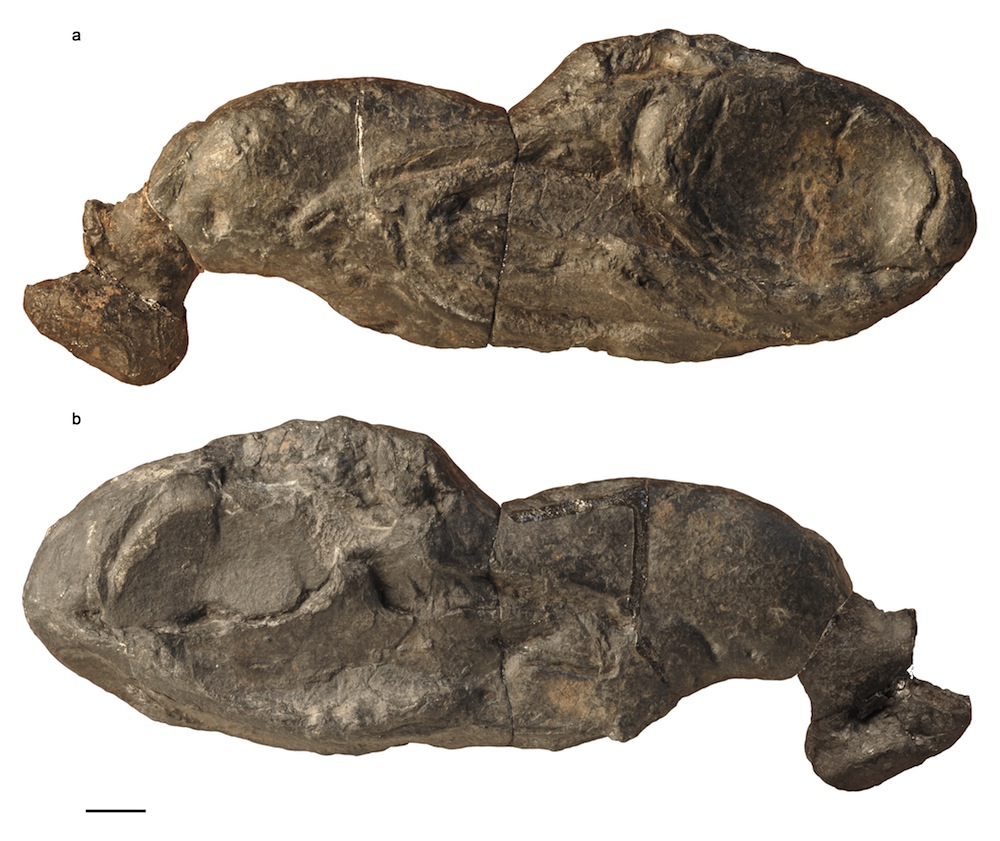Modern Sharks Aren't So Primitive, Ancient Fossil Suggests

Sharks are usually thought of as primitive creatures, sometimes called "living fossils." But a new study of a 325-million-year-old shark fossil — the most complete of its kind — suggests modern sharks have evolved significantly from their bony ancestors.
The ancient fossil has characteristics of both bony fishes and modern sharks. But its gill structures more closely resemble those of bony fishes, challenging the notion that modern sharks have remained unchanged over evolutionary time.
"Standard anatomical textbooks say that the shark is a model of a primitive jawed vertebrate, [but] that’s all wrong," said John Maisey, curator of paleontology at the American Museum of Natural History in New York and a co-author of the study detailed today (April 16) in the journal Nature. [8 Weird Facts About Sharks]
Until now, paleontologists studying the evolution of early jawed vertebrates, or gnathostomes, have focused on either cartilaginous fishes (modern sharks and rays) or bony fishes. Modern sharks were thought to have changed very little over evolutionary time.
But comparing a modern shark with a primitive one would be like comparing a modern automobile with a Ford Model T — they share some similarities, but under the hood they're completely different, Maisey told Live Science.
A bony shark
The shark fossil in the study, Ozarcus mapesae, was found in Arkansas by husband and wife Royal and Jean Mapes (for whom the species is named), who donated it to the museum. The shark was about 3 feet (90 centimeters) long with very large eyes, and appears to have lived in a shallow, murky inland sea that was also home to giant squidlike creatures, Maisey said.
Get the world’s most fascinating discoveries delivered straight to your inbox.
The researchers X-rayed the fossil, first using a CT machine and later using a synchrotron, which relies on ultra-high-energy X-rays and has become an important tool for paleontology because it doesn't destroy the fossils and provides a level of detail not possible with traditional fossil preparation. Maisey called it "the Hubble Space Telescope of paleontology."
The X-ray scans revealed the fossil had complete gill arches, the support structures for the gills that fish use to breathe. These gill arches were arranged in a serial way, more like those of bony fish than modern sharks.
The fossil's jaws were also more like those of bony fish. Most modern sharks have jaws that are attached to their skulls by flexible ligaments, whereas bony fish have jaws that are rigidly fused to their craniums.
It's not the oldest shark fossil found, but it is one of the most complete. It provides a new model for interpreting other fossils, allowing scientists to make comparisons between early jawed vertebrates and sharks, Maisey said.
Follow Tanya Lewis on Twitter and Google+. Follow us @livescience, Facebook & Google+. Original article on Live Science.



